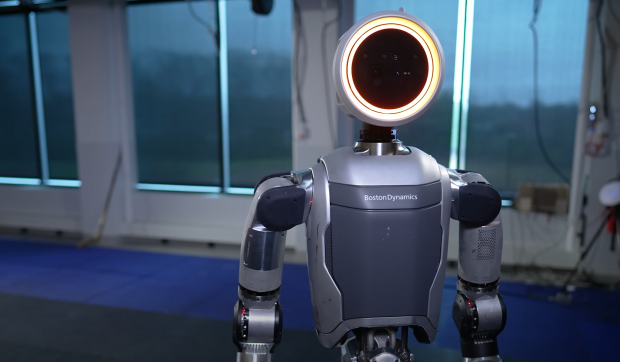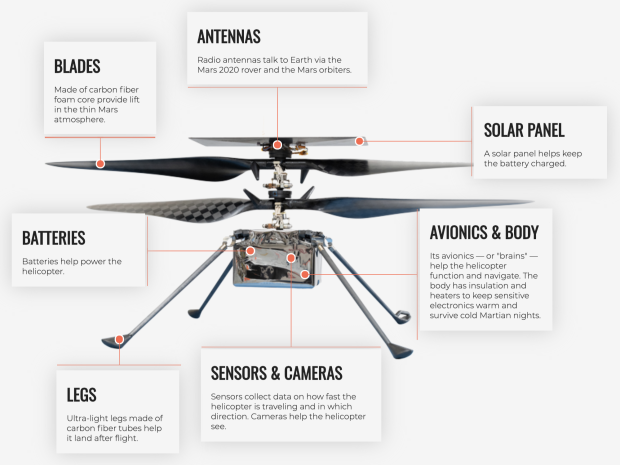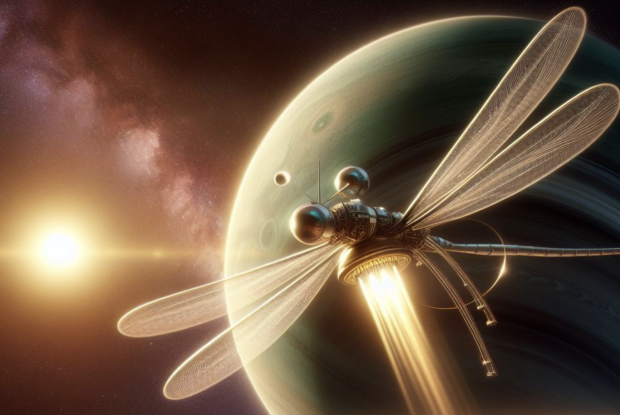Science, Space, Health & Robotics News - Page 1
NASA is about to make Treasure Planet real with a solar sail mission
NASA is preparing to launch its massive solar sail into space on the back of a rocket to test the power of sunlight and determine whether it will be a viable means of propulsion to traverse the solar system.
The technology seen in the 2002 animated Disney movie Treasure Planet is about to be tested in space by NASA, as the space agency has announced via its blog that its very own solar sail is about to be transported into space on Tuesday, April 23, aboard a Rocket Lab Electron rocket. NASA explained that the CubeSat for the mission will be deployed 600 miles above Earth, which is about twice the altitude at which the International Space Station (ISS) orbits the planet.
Once in position, the CubeSat, which is approximately the size of a microwave oven, will undergo a two-month-long system check that will then be followed by the deployment of its solar sail. When fully unfurled, the solar sail will be as big as half a tennis court. The test will consist of many up and down maneuvers to hopefully prove the solar sail is able to use sunlight as a viable means of propulsion.
Continue reading: NASA is about to make Treasure Planet real with a solar sail mission (full post)
Dubai government responds to claims cloud seeding caused historic flooding
Dubai has been hit with a historic amount of rainfall this week, which some are blaming are a result of the United Arab Emirates' use of weather modification techniques.
Cloud generation is a real thing, and the United Arab Emirates has been leading the charge on technology for decades. The nation has been conducting experiments with the intention of assisting the generation of clouds in the region that lead to rainfall. The process works by cloud seeding planes releasing crystalline chemicals into already present clouds to increase rainfall, but now that technology has been thrown into question as Dubai has received an unprecedented amount of rainfall, the most in the region in the last 75 years.
Some areas received as much as 10 inches of rainfall within 24 hours, resulting in the unequipped region to suffer under intense flooding. Notably, neighboring country Oman has reported as many as 18 deaths as a result of the rainfall, with some of those deaths being schoolchildren.
Boston Dynamics unveils its next-gen humanoid robot in a very disturbing way
Boston Dynamics, one of the leaders in the robotics industry that has seen successful commercialization of its products, has unveiled its next-generation humanoid robot that replaces the well-known Atlas robot.
A few days ago, Boston Dynamics announced it was retiring the hydraulic Atlas robot, which has gone viral numerous times throughout its 10 years of development with demonstrations of its impressive mobility capabilities and human-like movement. Boston Dynamics writes in its blog post that all the data gathered throughout the past 10 years has gone into developing a fully electric Atlas robot that will be designed for real-world applications such as working with people.
This new version of Atlas is stronger, more dexterous, more agile, and has been designed to move in the most efficient way possible to complete any given task. This design choice is different from the previous generation of Atlas, which was built around replicating the human range of motion. Next-gen Atlas will have movement capabilities that exceed a human's range of motion, which was demonstrated in an extremely impressive and disturbing way in the above video.
NASA's Mars helicopter sends heart-warming final message back to Earth
Ingenuity, NASA's Mars helicopter was forced to end its mission after taking some critical damage in a landing, but the small helicopter will not be going gently into that good Martian night.
NASA landed its Mars helicopter in the Jezero Crater with its Mars rover named Perseverance in 2021, with the initial goal of Ingenuity being a flight demonstration. NASA simply wanted to see if flight was possible on another planet.
Ingenuity achieved this goal and became the first aircraft to conduct a powered and controlled extra-terrestrial flight. Ingenuity was only intended to make five flights, but went on to complete 72 across its three years of service, serving as a reconnaissance vehicle for Perseverance by scouting areas of interest and upcoming terrain which NASA can then use to map the safest path for Perseverance.
Continue reading: NASA's Mars helicopter sends heart-warming final message back to Earth (full post)
Meteorologist warns of future 'weather wars' using cloud seeding after torrential rain in Dubai
If you haven't seen the torrential rain flooding Dubai in the UAE, well, the country has experienced extreme flooding after the gigantic downpour on Monday. The downpour disrupted everything in Dubai, closing schools and flooding homes and businesses.
A meteorologist has warned that potential future "weather wars" will happen between countries if cloud seeding technology gets "out of hand". There have been theories of how the torrential rain in Dubai occurred -- possibly by cloud seeding or chemtrails, geoengineering technology to make it rain -- something that sees chemicals injected into clouds, sparking precipitation (rain).
This kind of technology has been around for close to 100 years, with one of the notable uses of it in the last few years being China spending millions of dollars to control the weather ahead of the Beijing Olympics back in 2016, something the country had been using the modify the weather since 2008.
Scientists are now using cheap NVIDIA chips to control hypersonic weapons
A team of researchers has penned a new study detailing the use of a cheap NVIDIA chip to control a hypersonic weapon.
The new study published in Propulsion Technology, a Chinese academic journal, details a team of researchers using a NVIDIA Jetson TX2i module to control and perform real-time optimization of the fuel supply system of a scramjet engine used in an air-breathing hypersonic missile. Notably, NVIDIA intends the Jetson TX2i module to be a low-cost solution for edge-computing, or AI. More specifically, the module contains a CPU, GPU and memory, all for a low price of just a few hundred dollars.
Additionally, the Jetson TX2i module isn't subjected to US export restrictions laid against China, which has curbed the exportation of high-end, powerful GPUs. It appears China is demonstrating that even cheap NVIDIA silicon, or any other low-cost silicon, can be used to control some of the deadliest weapons on the planet and that even if an export ban has been placed on the nation, it will find a way to create and control these weapons with chips that only cost a couple hundred dollars.
NASA confirms nuclear-powered Dragonfly mission with a Saturn moon destination
NASA has confirmed in a new blog post that it will be sending a nuclear-powered Dragonfly, a newly designed rotorcraft, to Saturn's moon Titan.
The space agency took to its blog and explained it's made the decision to point the Dragonfly rotorcraft mission at Saturn's organic-rich moon Titan, enabling engineers to enter the final stages of the rotorcraft's development and testing. NASA explains the Dragonfly mission was confirmed with a total lifecycle cost of $3.35 billion and a launch date of July 2028, which is a cost that is two times what was originally proposed, and a delay of more than two years from the initial launch year of 2019.
Due to funding constraints, NASA had to re-juggle the Dragonfly mission, and to compensate for the delay, NASA has added a more powerful rocket that will reduce the time it takes to arrive at its destination. Engineers have equipped the rotorcraft with eight rotors and various scientific instruments. When flown, it looks like a large drone. It's expected that Dragonfly will arrive at Titan in 2034, and once it does, it will mark the first time that "NASA will fly a vehicle for science on another planetary body," writes the space agency.
NASA's Mars sample mission crumbles leaving precious samples stranded
NASA officials announced on April 15 that the initial plan to get the Mars samples collected by NASA's Perseverance rover is now deemed impractical.
NASA's Mars rover Perseverance has been exploring the Red Planet's desolate landscape since 2021 and collecting samples along the way. These samples are precious as they could contain evidence of ancient microbial life that once lived on Mars, which would mean Earth isn't the only planet capable of hosting life, giving credence to the theory that many planets throughout the universe could also be hosting life. However, we won't know for sure until NASA returns to the samples back to Earth for an in-depth analysis.
Here lies the problem. NASA's initial plan for returning the samples has been plagued by delays, cost overruns, and long timelines. An example of how bad costs have gotten came from an independent review board that estimated in 2020 NASA's return mission would cost anywhere between $2.5 and $3 billion. Now NASA is saying its mission would cost $11 billion, and the samples wouldn't be returned until 2040, with previous estimates putting the return timeline in the 2030s.
Continue reading: NASA's Mars sample mission crumbles leaving precious samples stranded (full post)
Space object smashes through roof of Florida home, NASA confirms surprising origin
In early March, a man from Naples, Florida, took to X, formerly Twitter, to report that an object crashed through his home's roof and two floors, almost hitting his son, who was home at the time of impact.
The homeowner is Alejandro Otero, and on March 8, an object smashed through his roof and both floors of his two-story home, luckily missing his son. Following the impact, NASA launched an investigation into the origin of the object, with predictions from astronomers tracing its origins back to jettisoned debris from the International Space Station (ISS).
NASA has since wrapped up the investigation and confirmed the object is debris from the ISS that was launched from the floating laboratory three years ago. NASA engineers took the object to Kennedy Space Center and confirmed it was a piece of the EP-9 support equipment that was used to mount batteries onto a cargo planet.
Nuclear explosion from Christopher Nolan's Oppenheimer recreated
Oscar-winning movie Oppenheimer directed by the distinguished Christopher Nolan pushed practical filmmaking to its limits, and now a videographer has attempted to recreate an important part of the movie, the Trinity nuclear test.
For those that don't know, Christopher Nolan decided not to use any special effects to capture scenes, such as Oppenheimer imagining scientific processes interacting at the atomic level. Instead, Nolan thought of ways to capture it all in-camera. The same standard was applied to the Trinity nuclear bomb test, which took set teams various tests to get absolutely perfect for the movie.
Now, macro videographer Thomas Blanchard has decided to recreate that test with Nolan's same standard, zero special effects, and the results were very impressive. Blanchard used various lenses, liquids, and objects to create the above video, such as a Canon 100mm macro lens, gold powder, an electric screwdriver, alcohol inks, magic candles, paper clips, and a laboratory shaker. The project took the filmmaker three months to create, but as per a typical filmmaker's curse, the most difficult shot he captured wasn't included in the final edit.
Continue reading: Nuclear explosion from Christopher Nolan's Oppenheimer recreated (full post)











